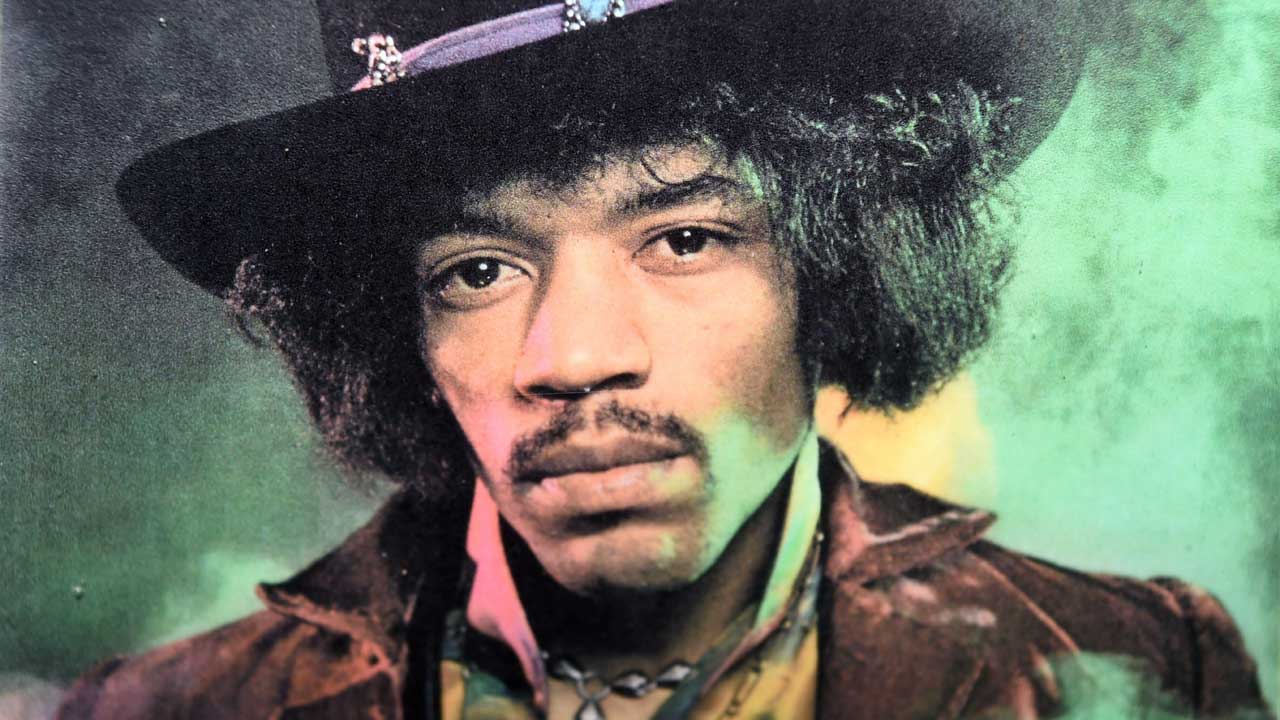
Jimi Hendrix’s posthumous discography is built on unfinished tracks and studio outtakes. Since his death in September 1970 there has been a stream of releases – some official, others less so. But there’s one set of songs that remains unreleased: Black Gold, an unfinished, autobiographical suite that may have provided the foundation for his fifth studio album.
Following the release of Electric Ladyland in 1968, Hendrix was besieged by personal and business problems. Despite this, he continued to write and record, keeping the tapes rolling as he hammered and honed tracks through different incarnations of songs at various studios, with a view to knuckling down and starting work on his next album as soon as he finished touring.
But the tracks that made up Black Gold were different. Recorded on his Martin acoustic guitar in Hendrix’s New York apartment and in hotel rooms between mid-1969 and spring of 1970, it was a suite of songs mapped into a bigger, over-arching concept – a fantasy biography in which Hendrix imagined himself as a range of characters such as Black Gold, Astro Man and Captain Midnite.
On the one hand, it seemed like Hendrix was tapping into the vogue for concept albums, as pioneered by The Who. On the other, it suggested he was dealing with the escalating pressures that surrounded him by taking refuge in the cartoons he’d loved as a kid.
“Here was this cat came around called Black Gold,” he said rather vaguely in one interview. “And there was this other cat came around called Captain Coconut. Other people came around. I was all these people… That’s my life until something else comes about.” In another, he talked about writing “pieces… movements, but like I was writing music cartoons.”
The songs that made up Black Gold were a mix of early acoustic sketches of various tracks, some of which would be released in different forms while Hendrix was alive (Stepping Stone, Machine Gun, both from the Band Of Gypsys live album), others which would end up on posthumous releases (Drifting, Suddenly November Morning and Trash Man).
But it’s the ones that have never officially seen the light of day that are of most interest. These include Captain Midnight 1201, God Bless The Day and the jazzy, flamenco-inspired The Jungle Is Waiting (with Hendrix providing appropriate sound effects). More than one title referred to the Black Gold character, namely Here Comes Black Gold and Black Gold itself. Elsewhere, Little Red Room was rumoured to refer a girl named Tami, whose mother, Diane Carpenter, claimed was Jimi’s daughter from a 1966 relationship, while Send My Love To Joan Of Arc would become Send My Love To Kathy (after girlfriend Kathy Etchingham), before changing again to Send My Love To Linda (apparently for phonetic reasons).
With its Mighty Mouse-inspired ‘Here I am to save the day’ intro, the two-part Astro Man was the track most obviously inspired by Hendrix’s fascination with superheroes – not least its comical second part, about a girl flipping out on acid and falling out of a window, only to be rescued by the eponymous hero (Hendrix would work up a version of the first part of the song with the Band Of Gypsys.)
Hendrix never got the chance to finish Black Gold. In the immediate years after his death, the songs attained the status of myth, before their existence was confirmed by Hendrix archivist Alan Douglas.
“Jimi did a suite… called Black Gold, kind of a phantasmic autobiography about a super stud that goes out on the road, becomes famous and goes up in the sky,” Douglas said in 1975. “One night we sat down and did the entire thing on a cassette set-up – it was magnificent! We were going to do an album from it, and a movie and so on.”
Douglas, who died in 2014, rarely mentioned the record again, except to suggest that the tapes had been stolen from Hendrix’s apartment by two disgruntled employees of the guitarist’s final manager, Mike Jeffery.
In a surreal twist, in 1992 Hendrix collector Tony Brown traced the Black Gold tape to Experience drummer Mitch Mitchell. Hendrix had presented it to Mitchell for safe keeping, along with several other cassettes. Mitchell had sat on the tape for all that time.
Mitchell died in 2008 without making Black Gold public. He was said to have sold the tape to the Experience Hendrix Project, who in 2010 said they would release the album “this decade”. 14 years on, it remains in the vaults, leaving the world wondering just what Black Gold could have been.







